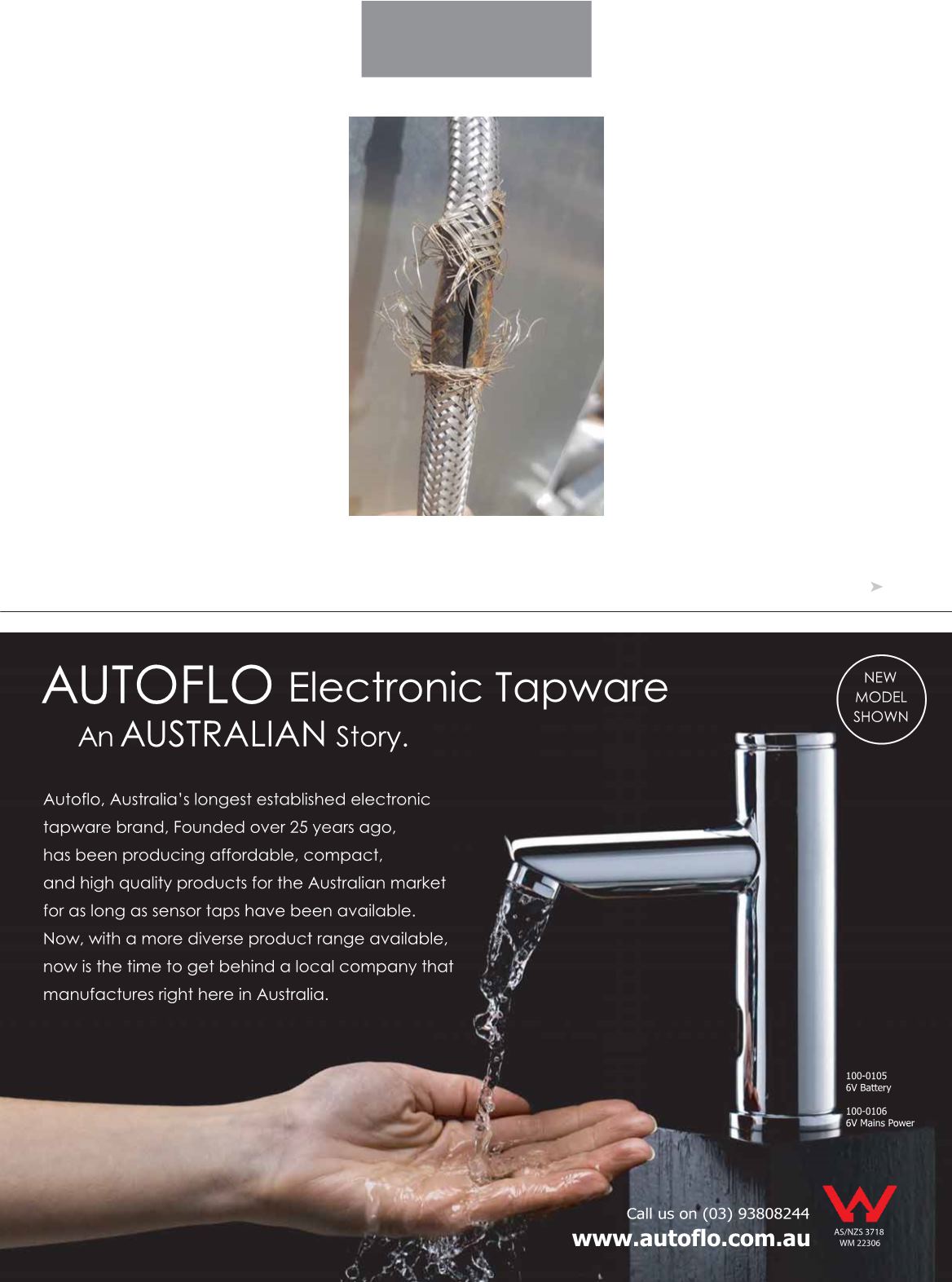
 www.plumbingconnection.com.au
www.plumbingconnection.com.au
1 9
“Once the water reaches 60°, the
evaporation process leaves behind
a deposit of chloride. Over time the
process continues and the chloride level
increases in the deposit until it reaches
a level that enables localised corrosion
of the stainless steel to occur. Since
the cracks caused by stress corrosion
cracking are so fine, they are difficult to
detect,” says Geoff.
This corrosion eats away at the
individual metal strands of the steel
sleeve, which eventually fail and break.
When enough of these strands fail, the
steel sleeve is no longer able to support
the inner lining and water pressure
causes the lining to bulge out of the
sleeve. This leads to the lining rupturing
and water escaping.
The presence of water exterior to the
hose is required for corrosion, which
is why most failures are seen under
kitchen, laundry and bathroom sinks,
toilets and dishwashers, rather than on
connectors to gas stove cook-tops.
Materials Solutions Australia (MSA)
engineering director Trevor Rowlands
says pulling apart burst flexible
connectors clearly shows the moisture
path and evidence of corrosion.
“Stainless steel isn’t impervious to
corrosion and can become vulnerable
when put through certain conditions.
However, the stainless steel braiding is
appropriate for its function and it’s the
leakage at the connection that is the
issue. You can always trace a leak path
in these hoses and all the ones I’ve seen
have had a leak path at the connector.”
WHY IS THIS HAPPENING?
There are various reasons why this
leakage occurs but four main issues
arise based on experience in the field.
These are installation, the effects of
water hammer, the quality of materials
in the manufacturing process and
household cleaning products being
stored within the vicinity of flexible
braided hoses in homes.
COVER STORY
FLEXIBLE BRAIDED HOSES
The stainless steel braided sleeve
corrodes, causing the rubber inner tube
to expand and burst.
Image supplied by
Neil & Craig Baker Plumbing - NSW.
















